A newspaper article in 1942 called “Fifty Years of Service” looks back over the history of the church.
Wilkinsburg as a borough was only four years old when the Baptists came to town as an organization. At that time there was a population of only three thousand. This was five years before streetcars came out to Wilkinsburg, and there was no convenient way of getting into the city to the Baptist churches there. The first meeting of Baptists together, prior to a church organization, was held in the First United Presbyterian Church on April 11, 1892. A committee of three was appointed to find a place of meeting, and Ralston Hall was rented and became the first church home of the Baptists in the borough. It was here, on May 22, 1892, that the first church was organized with nine charter members. Mrs. M. E. Thompson, Anna and Blanche, her daughters; Mr. and Mrs. Maxon, Mr. and Mrs. William Harris, Mrs. Mary Marshall and T. J. McClerman. Miss Minette Thompson, now living on Trenton avenue, was a young child and was present at that meeting.
The congregation met at Ralston Hall for about a year and a half.
When the church was three months old, having now a total membership of fifteen, the first minister was called, Dr. J. M. Ray. His daughter, Charlotte, is now the dean of women at Penn State.
The church gained recognition of the Pittsburgh Baptist Association on October 27, 1892 with twenty-two members.
The history pages in the 1957 “Dedication Services of the Wilkinsburg Baptist Church” record:
The need for a building suitable to our work and growth was evident, and in September 1892, a committee had been appointed to devise a plan for raising money, and to secure a suitable building or location. Ten days later the committee recommended purchase of the old property of the Methodist congregation on Wallace Avenue at Center. After considerable remodeling and improving, the building was occupied and dedicated on December 17, 1893. Two weeks later the first baptisms were administered, seven persons being added at that time.
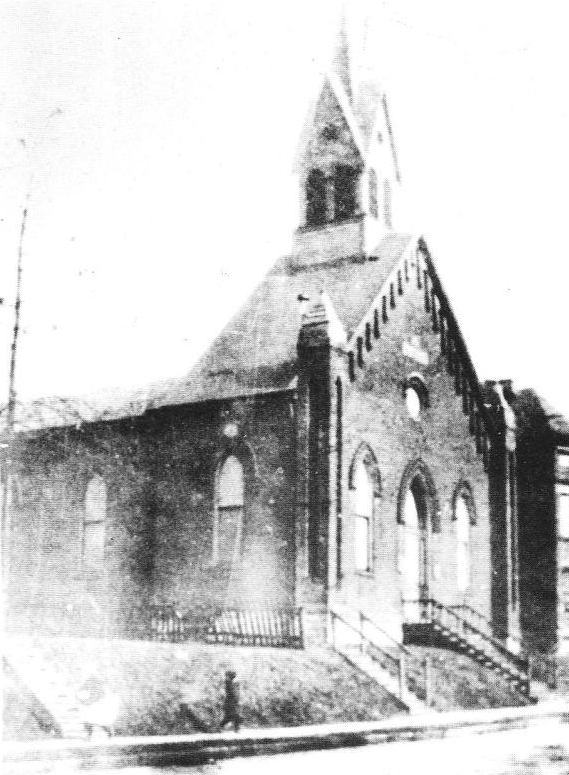
from “This is South Avenue Church,” 1982, Wilkinsburg Public Library Digital Archives
The 1987 “Wilkinsburg Baptist Church” publication tells:
The Rev. John M. Moore began his pastorate on April 11, 1897. During his ministry the church was led to establish a mission in nearby Homewood. This later became the Homewood Baptist Church. In the meantime, the indebtedness on the Wilkinsburg church was liquidated.
When the Rev. Dr. George C. Horter arrived on August 1, 1904, the church was beginning to need more space. Accordingly, the old meeting house was razed, and a larger building of redstone and brick erected on the same site.
The congregation dedicated the new church building on January 13, 1907. During construction of the building, the congregation met at a hall above the National Bank Building.
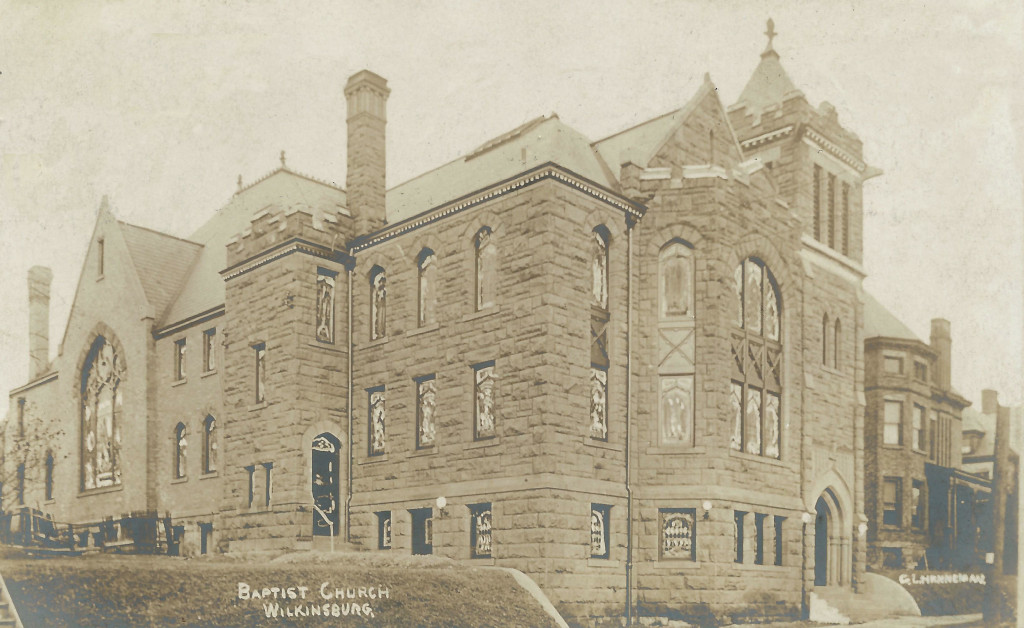
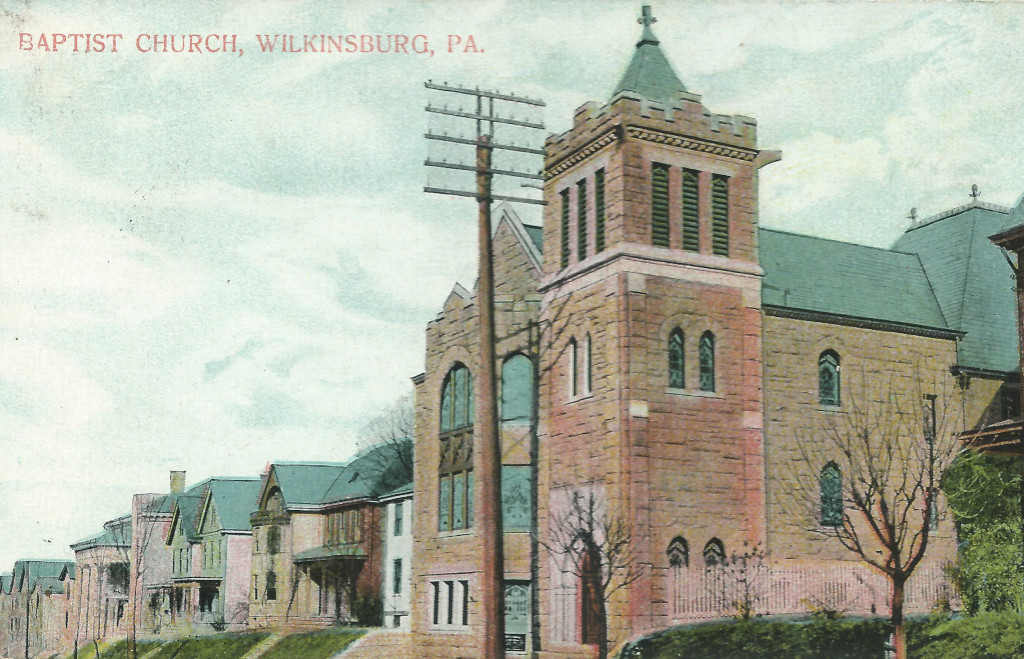
In 1915, between two pastorates, the sanctuary was renovated and a Moeller pipe organ installed.
During the 1920’s this congregation joined other Baptists in establishing a mission in Rankin, which now operates as Rankin Christian Center—an American Baptist Mission project, and United Way agency.
The middle of the Great Depression brought Rev. Orva Lee Ice (1932–1945) to a varied ministry, guiding the congregation through changing times until the end of World War II. The Drs. John and Cora Lenox who had represented the church as medical missionaries in West China since 1931 were able to flee that country and return home safely.
–Wilkinsburg Baptist Church, 1987
On May 19, 1946, Rev. Earl R. Sidler, II, began his ministry, after nearly five years in the U. S. Army chaplaincy. In November of that year, chimes were installed in our organ as a memorial to those of our congregation who had given their lives in our country’s service: J. Marion Shackelford, who died in World War I; and Benjamin Wilkinson, Gordon Lane Weston, and William D. Hafer who were lost in World War II.
Also, an Oboe stop was added to our organ as a memorial to Mrs. Alice T. Pratt, given by her husband, Augustus T. Pratt, long time Treasurer of the church.
. . . .
Pressed for space and better facilities, the church appointed a committee in December 1952 to survey our needs and study remodeling and expansion possibilities.
In May 1953 the church heard the committee’s report and authorized the trustees to retain an architect who submitted preliminary plans for a new sanctuary on the Center Street property, angling from the old building toward the street corner. The existing structure was to be completely renovated into a three-story, fireproof building for education and fellowship.
A fund-raising campaign, under professional guidance, raised pledges totaling about $125,000 in September and October 1954.
The architect had nearly completed final plans for the new work when fire destroyed the church on Saturday, February 26, 1955. It began apparently in the furnace room about 10:00 a.m., burned upward through the prayer meeting room, and then the children’s departments on the third floor. From there, flames spread quickly through the dry wooden structure of the sanctuary dome and roof of the church.
–Church History, 1957 Dedication
At the height of the fire, firefighters had to leap to safety to avoid being crushed by a falling wall. Rev. Sidler was treated for a sprained ankle. Church records could not be saved.
On Sunday, the congregation met at the Penn Lincoln Hotel. Over three hundred people heard Harry Rau, the assistant superintendent of the Sunday School, tell, “We should give thanks to God that the fire occurred on Saturday and not today. Now we must look to God in the work ahead.” Rev. Sidler’s sermon centered on the bible verse, “For we know that all things work together for good to them that love God.”
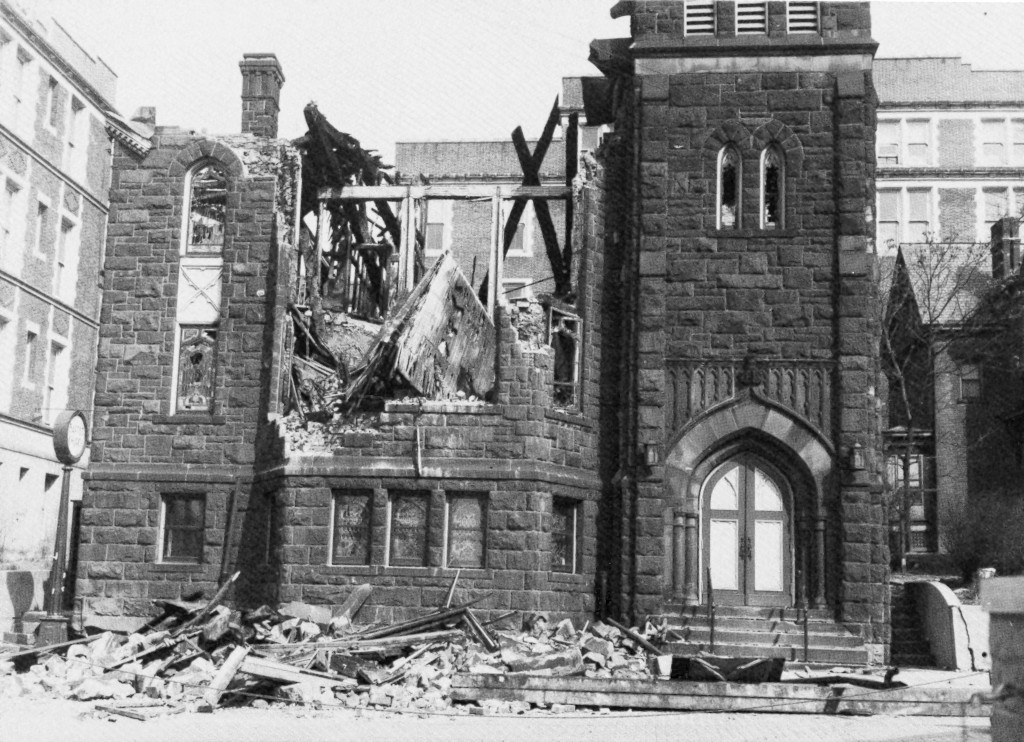
The fire was a blow and there was sadness over the loss of our lovely organ which had been modernized in 1952. Also, for the two beautiful stained glass windows—Hofmann’s “Christ in Gethsemane”, dedicated to the memory of Deacon F. Gardner; and “Christ Walking on the Water” to Deacon R. P. L. Miles. These were to have been transferred to the new sanctuary.
–Church History, 1957 Dedication
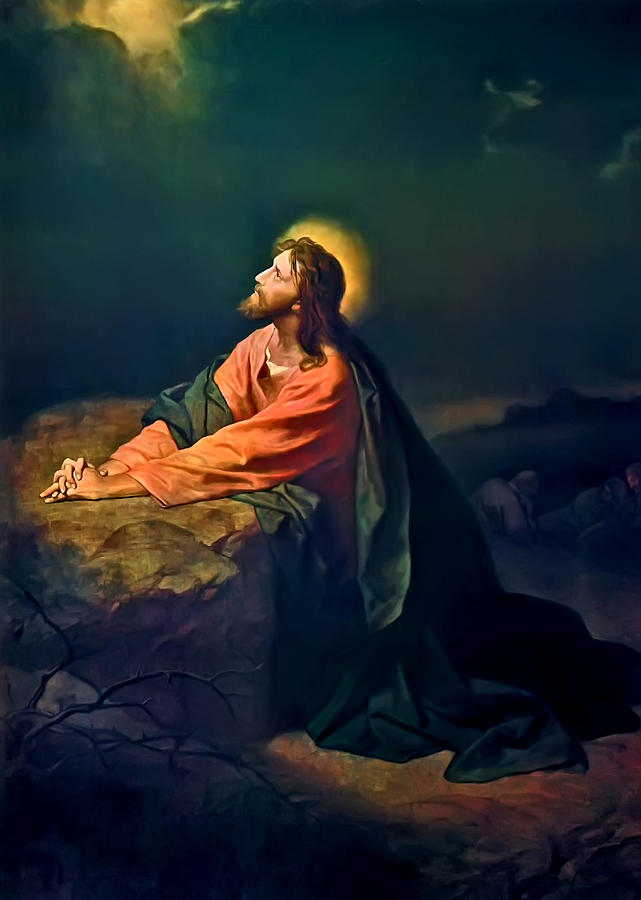
nearly lost in the San Francisco earthquake and fire of 1906
In all members’ hearts there was the feeling that the fire had cleared away the problems of the remodeling-expansion project. In a matter of days, the architect had roughed out the design and general outlines of our new church.
Church school and worship services were held, for several Sundays, in the former American Legion Hall, corner of Coal and South. Then for two years, the YWCA facilities were used—with the small children being cared for in space provided by the Christ Evangelical United Brethren Church.
The Christian Church across Wallace Avenue provided office space and invited us to use their facilities for special occasions.
New pledges, increased pledges, special gifts, a short-term construction, a long-term mortgage for $75,000—all of these have been part of our financial concern for a church that will cost nearly $400,000 when all the details are finished.
–Church History, 1957 Dedication
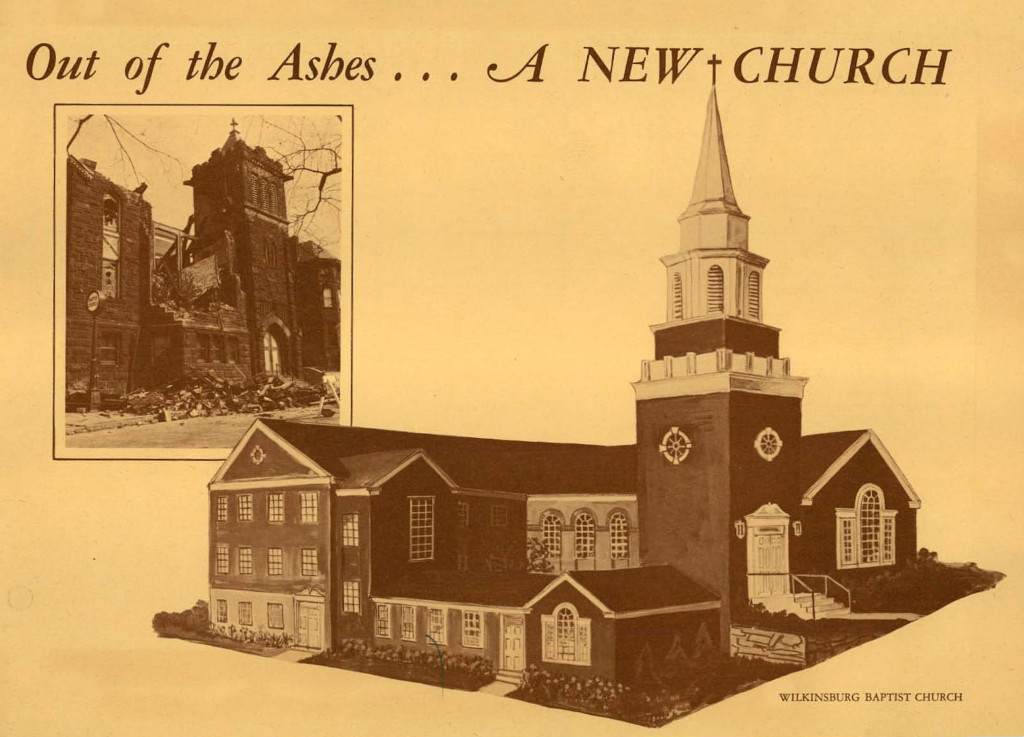
Ground was broken the second Sunday of October, 1955 at a special worship service on the site. Mr. William M. Myler, trustee, and long-time vigorous layman, turned the first spadeful of earth—a fitting act that crowned a 91 year life of forward-looking Christian activity.
The cornerstone was laid on Sunday, September 30, 1956, and the building was occupied for church school and worship on June 23, 1957.
Some furnishing and appointments—are still to be completed, but this Dedication and our sixty-fifth anniversary finds us amply prepared to render a new and greater service to this community and our Lord.
–Church History, 1957 Dedication
Rev. Sidler told the Wilkinsburg Gazette reporter, “The interim, between the fire and the present, has more closely knit the congregation. During this whole time attendance never lagged, when services were conducted at the YMCA, and, since the fire, attendance never lagged, when services were conducted at the YWCA, and, since the fire, attendance has in fact increased more than fifty percent.”
The Dedication Services began Sunday morning, September 22, 1957, with a dedication of the Christian education building and included a denominational night on Sunday evening, a community night on the following Wednesday evening to dedicate the chapel, a dedication of the fellowship hall on Friday evening, a dedication of the sanctuary on the following Sunday, an open house in the afternoon, and a dedication of the organ in the evening.
The changing community needs and lifestyles of the 1960’s were a challenge during the pastorate of Rev. Ward E. Gage (1962–1982). A Pre-school Nursery program was started, and provides for about 30 children each year. Personnel has been given to the Wilkinsburg Community Ministry and the church’s facilities made available for various programs. The church’s present pastor, Rev. Paul Aiello, Jr. is currently present of WCM.
–Wilkinsburg Baptist Church, 1987
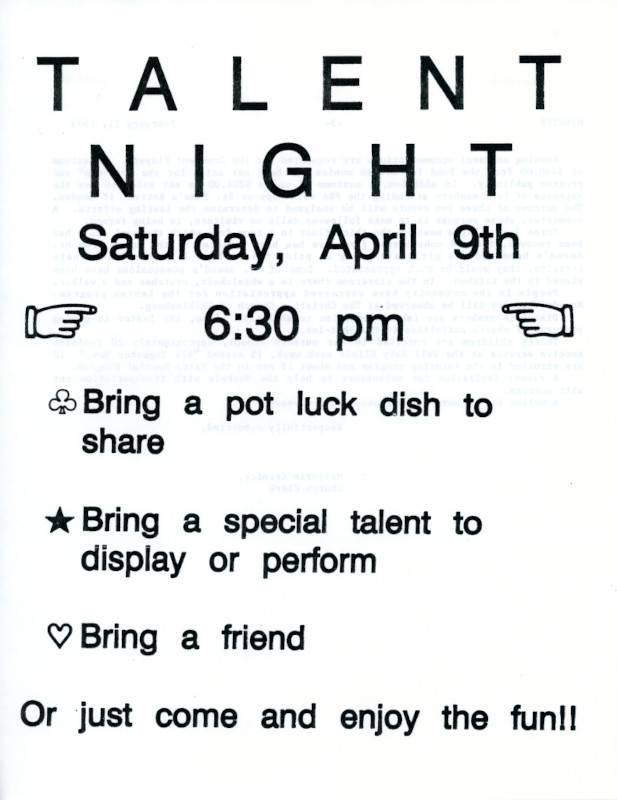
Over the course of the ministries of Rev. Ward Gage, Ronald Burnett, Associate Minister Rev. Richard Horn, Rev. Paul Aiello, and Rev. Thelma Mitchell, the congregation worked at community outreach and involvement including hosting a soup kitchen. One Sunday in the narthex copies of Martin Luther King’s “Letter from Birmingham Jail” were available.
The size of the congregation had diminished until the prospect of financially sustaining the church in the future was not possible. With the goal of keeping the social service active and the hope of creating a new church with Rev. Thelma Mitchell as the pastor, the Wilkinsburg Baptist Church closed. The building was transferred in November of 2003 to the Wilkinsburg Baptist Association and then in October of 2004 to the Dunamis Baptist Church of Wilkinsburg.
______
William Russell Pankey, History of the Churches of the Pittsburgh Baptist Association. Philadelphia: Judson Press, 1939, pp. 81—82.
“The Life & Art of Heinrich Hofmann” by Angela Swanson Jones.
http://www.heinrichhofmann.net/christ-in-gethsemane.html
“Christ in Gethsmane ” by Heinrich Hofmann, public domain, via Wikimedia Commons, self-scanned by User:JGHowes from 1945 print published by the Board of Trustees, Riverside Church, New York, NY.
https://commons.wikimedia.org/wiki/File:Christ_in_Gethsemane.jpg
Blanche Thompson, updated by William Merrifield, “Church History” in “Dedication Services of the Wilkinsburg Baptist Church,” 1957.
Wilkinsburg Public Library Digital Archives:
“Fifty Years of Service” 1942.
“Wilkinsburg Church Fire Spurs Members’ Plan for New Edifice” Post-Gazette, February 28, 1955.
”A New Hope Was Born in Flames of Fire that Destroyed Baptist Church“ Wilkinsburg Gazette, September 19, 1957.
